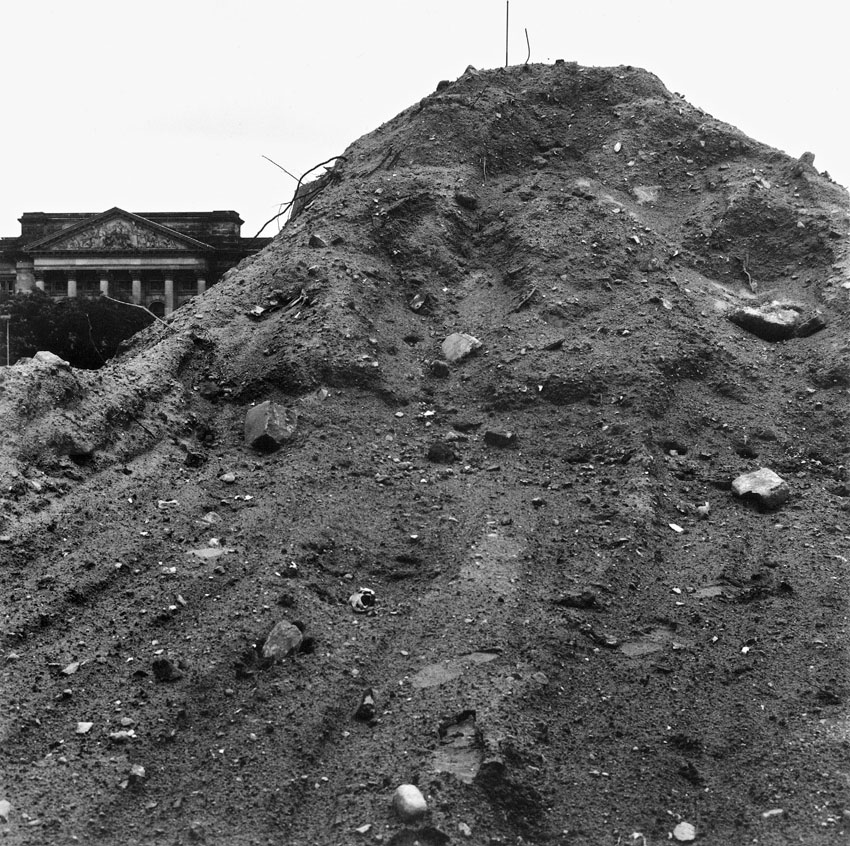Berlin 1993 — Jonas Maron
01.08 - 03.10.2014
Der Sprechsaal in Berlin Mitte zeigt vom 01. August 2014 bis zum 03. Oktober diesen Jahres eine Ausstellung selten gezeigter Bilder des Berliner Fotografen Jonas Maron.Jonas Maron, Meisterschüler bei Arno Fischer, fotografiert 1993 das Nachwende-Berlin – zwischen hoffnungsvollem Aufbruch und ungewisser Zukunft.Seine Bilder beschreiben vor allem anderen die Stadt als Raum. Er zeigt nicht West-Berlin, auch nicht Ost-Berlin. Es ist der Zwischen-Raum und die Zwischen-Zeit der melancholischen Vorhölle der taumelnden Neunziger. Keine Erwartung einer Metropolen-Karriere. Eher die Angst vor dem Verlust der Hinterlandnische.
Eine verloren gegangene Provinz erlebt den Einmarsch der neuen Besatzungsmacht.
1993 war Berlin unbezahlbar, heute ist es käuflich wie vordem.Jonas Maron ist in Ostberlin geboren, seine Fotografien der Stadt sind Innenansichten einer Heimat. Haben seine Bilder einen Dialekt? Mit Vorträgen, Diskussionen, Interviews, Hörspielen, Filmen und Performances möchte sich der Sprechsaal dieser Frage widmen.: Ausstellung und Begleitprogramm ergeben, typisch für den Sprechsaal, eine Einheit. Berlin damals, Berlin heute – wie konnte das passieren?
Sprechsaal located at the heart of Berlin‘s heart is honoured to present an exhibition of rarely seen photos from the Berlin photographer Jonas Maron from August 1 to October 3.
Joans Maron, a master student under Arno Fischer, photographed Berlin in the time just after the Wall fell – a time torn by hope-filled change and apprehension about the future,
His images place a particular emphasis on the city as a special entity. He did not capture West Berlin or East Berlin, but the space and time just before the chaotic limbo of the nineties. Nobody was in awe of the hyperbolic metropolis on the horizon; people were in fear of losing their provincialism. A lost province was witnessing its own transformation and occupation. In 1993 Berlin was priceless, today it can be bought and sold like everywhere else.Jonas Maron was born in East Berlin; his images of the city are like interior perspectives on his Heimat. But do his photos carry a regional accent?
Sprechsaal is going to dedicate the next moths to answering this question and asking more about the limits, syntaxes and lifeworlds unique to Berlin with lectures, discussions, audio books, film and performance. The exhibition and accompanying programme, in Sprechsaal’s trademark fashion, will present a unified front. Berlin then-Berlin now – how did that happen?
Eine verloren gegangene Provinz erlebt den Einmarsch der neuen Besatzungsmacht.
1993 war Berlin unbezahlbar, heute ist es käuflich wie vordem.Jonas Maron ist in Ostberlin geboren, seine Fotografien der Stadt sind Innenansichten einer Heimat. Haben seine Bilder einen Dialekt? Mit Vorträgen, Diskussionen, Interviews, Hörspielen, Filmen und Performances möchte sich der Sprechsaal dieser Frage widmen.: Ausstellung und Begleitprogramm ergeben, typisch für den Sprechsaal, eine Einheit. Berlin damals, Berlin heute – wie konnte das passieren?
Sprechsaal located at the heart of Berlin‘s heart is honoured to present an exhibition of rarely seen photos from the Berlin photographer Jonas Maron from August 1 to October 3.
Joans Maron, a master student under Arno Fischer, photographed Berlin in the time just after the Wall fell – a time torn by hope-filled change and apprehension about the future,
His images place a particular emphasis on the city as a special entity. He did not capture West Berlin or East Berlin, but the space and time just before the chaotic limbo of the nineties. Nobody was in awe of the hyperbolic metropolis on the horizon; people were in fear of losing their provincialism. A lost province was witnessing its own transformation and occupation. In 1993 Berlin was priceless, today it can be bought and sold like everywhere else.Jonas Maron was born in East Berlin; his images of the city are like interior perspectives on his Heimat. But do his photos carry a regional accent?
Sprechsaal is going to dedicate the next moths to answering this question and asking more about the limits, syntaxes and lifeworlds unique to Berlin with lectures, discussions, audio books, film and performance. The exhibition and accompanying programme, in Sprechsaal’s trademark fashion, will present a unified front. Berlin then-Berlin now – how did that happen?












